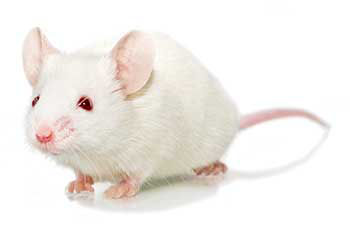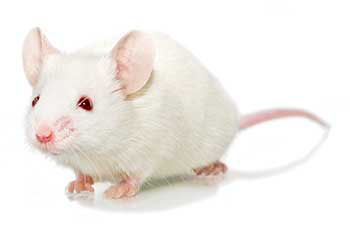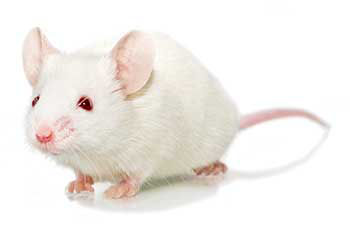Application Areas:
B2m-NOG

| Model No. | Nomenclature | Genotype |
|---|---|---|
| 14957-F | NOD.Cg-B2mem1Tac Prkdcscid Il2rgtm1Sug/JicTac | ko/ko;sp/sp;ko/ko |
| 14957-M | NOD.Cg-B2mem1Tac Prkdcscid Il2rgtm1Sug/JicTac | ko/ko;sp/sp;ko/y |
- Description
- Data
- Price & Licensing
- Health Report
- Overview
- Genetics
- Guides & Publications
- Applications & Therapeutic Areas
- Transit, Housing & Welfare
- Diet
Overview
Nomenclature: NOD.Cg-B2mem1Tac Prkdcscid Il2rgtm1Sug/JicTac
- The B2m-NOG is an immunodeficient CIEA NOG mouse® with an additional knockout of the B2m gene which disrupts MHC class I antigen presentation.
- B2m-NOG mice can successfully engraft human PBMCs and tumors.
- Compared to NOG, B2m-NOG mice have markedly delayed GvHD onset after human PBMC engraftment, providing an expanded study window (8+ weeks). This vastly increases the utility of the model in immuno-oncology experiments.
- B2m-NOG has reduced efficiency of human PBMC engraftment relative to NOG as well as a CD4+ bias that increases over time in engrafted peripheral blood T cells (see data section).
- Available engrafted with human PBMCs as huPBMC-B2m-NOG.
Availability
Available now in typical study quantities.Recommended Controls
The recommended control for this model is CIEA NOG mouse.
Origin
Genetics
Guides & Publications
Initial Publication: Verma, B.; Ruggeri, B.; Dubé, P.; Volden, P.; Wesa, A. Unique Immunodeficient Murine Host Strains Impact Expansion and Engraftment of T cells in PBMC Humanized Mice. New York Academy of Sciences’ Frontiers in Cancer Immunotherapy. May 14-15, 2019; New York, NY.
Applications & Therapeutic Areas
- Cell and Tissue Humanized
- Immunology
- Inflammation
- Oncology & Immuno-Oncology
Transit, Housing & Welfare
Need more info? Click the live chat button or Contact Us
Packing Practices
Taconic standard practice is to recombine animals of different home cages and/or ages from a single model and sex during packing, except in specific cases where Taconic's animal welfare policy prohibits recombination due to aggression or other concerns. When an order is fulfilled with animals from more than one week of birth, this standard practice results in animals from a range of birth weeks packed together in a single TTC. When an order is fulfilled with animals from genotyped models, this standard practice results in animals from different home cages packed together in a single TTC.
Customers who wish to keep animals from different weeks of birth separated should place orders with the special instruction "Divide and label by age." Note that this special request can result in increased costs for additional Taconic Transit Cages, dividers and/or freight charges.
Taconic discourages other types of custom packing requests as they can have a negative impact on animal welfare. Learn more.
Diet
PBMC Engraftment Kinetics

B2M-NOG has Extended Survival Compared to NOG Following Human PBMC Engraftment

B2m-NOG mice successfully engraft human PBMCs

B2m-NOG mice at 6-11 weeks of age were engrafted with varying doses of human PBMCs via tail vein injection. Engraftment was assessed weekly by flow cytometry of peripheral blood samples and is expressed as human CD3/mouse CD45.
B2m-NOG mice have extended survival following human PBMC engraftment
GvHD-free survival of PBMC engrafted mouse strains

NOG and B2m-NOG mice at 6-11 weeks of age were engrafted with 1 x 107 human PBMCs from a single donor via tail vein injection. Mice were monitored for signs of xenogeneic Graft vs. Host Disease for up to 8 weeks post engraftment. Data is shown in the Kaplan-Meier survival curve to represent proportion of mice exhibiting xenogeneic GvHD-free survival for the study duration by group (N=6/cohort). (P<0.001, Log rank Mantel-Cox test).
T cell subsets in B2m-NOG mice engrafted with human PBMCs

B2m-NOG mice at 6-11 weeks of age were engrafted with 1 x 107 human PBMCs from a single donor via tail vein injection. Peripheral blood samples were collected weekly and immunophenotyped for T cells (CD3) and T cell subsets (CD4, CD8) to assess of T cell subset development and kinetics. Flow cytometry was used to assess CD4 and CD8 T cell subsets across groups. Results represent the average ± SD (N=5-6/cohort).
All data adapted from Verma et al. 2019.
- Licensing
- Pricing - USD
- Pricing - EUR
- Pricing - DKK
- Pricing - USD Nonprofit
- Pricing - EUR Nonprofit
- Pricing - DKK Nonprofit
- Select my Health Standard
- Get Custom Pricing Guide
B2m-NOG
Nonprofit users (excluding users at nonprofit foundations which are affiliated with a for-profit entity): For internal research purposes, the CIEA NOG mouse® Conditions of Use for nonprofit users apply. If you wish to perform sponsored research or fee-for-service contract research using the CIEA NOG mouse®, please inquire for access conditions.
For-profit users and users at foundations which are affiliated with for-profit entities: The CIEA NOG mouse® Conditions of Use for for-profit users apply.
The CIEA NOG mouse® is produced and distributed under license rights to the following patents and trademarks:
- Japanese Patent No. 3,753,321
- US Patent No. 7,145,055; 5,464,764; 5,487,992; 5,627,059; 5,631,153; 5,789,215; 6,204,061; 6,653,113; 6,689,610
EP Patent No. 1,338,198 - Japanese Trademark Reg. No. 4,823,423
- US Trademark Reg. No. 3,118,040
- EU Trademark Reg. No. 3,736,758
Pricing - USD
Opportunist Free (OF) Health Standard
14957 Female
14957-F Genotype ki/ki;sp/sp;ko/ko
Available now
| Age in Weeks | Quantity 1 - 49 | Quantity 50 - 999 |
|---|---|---|
| 3 to 10 | US$394.00 | US$354.00 |
14957 Male
14957-M Genotype ki/ki;sp/sp;ko/y
Cohorts are reserved upon order placement and will take 2-4 weeks to fulfill. An estimated lead time will be provided to you within 2-3 business days.
| Age in Weeks | Quantity 1 - 49 | Quantity 50 - 999 |
|---|---|---|
| 3 to 10 | US$276.00 | US$276.00 |
Pricing - EUR
Opportunist Free (OF) Health Standard
14957 Female
14957-F Genotype ki/ki;sp/sp;ko/ko
Available now
| Age in Weeks | Quantity 1 - 49 | Quantity 50 - 999 |
|---|---|---|
| 3 to 10 | 358,00 € | 323,00 € |
14957 Male
14957-M Genotype ki/ki;sp/sp;ko/y
Cohorts are reserved upon order placement and will take 2-4 weeks to fulfill. An estimated lead time will be provided to you within 2-3 business days.
| Age in Weeks | Quantity 1 - 49 | Quantity 50 - 999 |
|---|---|---|
| 3 to 10 | 251,00 € | 251,00 € |
Pricing - DKK
Opportunist Free (OF) Health Standard
14957 Female
14957-F Genotype ki/ki;sp/sp;ko/ko
Available now
| Age in Weeks | Quantity 1 - 49 | Quantity 50 - 999 |
|---|---|---|
| 3 to 10 | kr.2.660,00 | kr.2.396,00 |
14957 Male
14957-M Genotype ki/ki;sp/sp;ko/y
Cohorts are reserved upon order placement and will take 2-4 weeks to fulfill. An estimated lead time will be provided to you within 2-3 business days.
| Age in Weeks | Quantity 1 - 49 | Quantity 50 - 999 |
|---|---|---|
| 3 to 10 | kr.1.860,00 | kr.1.860,00 |
Pricing - USD Nonprofit
Opportunist Free (OF) Health Standard
14957 Female
14957-F Genotype ki/ki;sp/sp;ko/ko
Available now
| Age in Weeks | Quantity 1 - 49 | Quantity 50 - 999 |
|---|---|---|
| 3 to 10 | US$189.00 | US$170.00 |
14957 Male
14957-M Genotype ki/ki;sp/sp;ko/y
Cohorts are reserved upon order placement and will take 2-4 weeks to fulfill. An estimated lead time will be provided to you within 2-3 business days.
| Age in Weeks | Quantity 1 - 49 | Quantity 50 - 999 |
|---|---|---|
| 3 to 10 | US$169.00 | US$152.00 |
Pricing - EUR Nonprofit
Opportunist Free (OF) Health Standard
14957 Female
14957-F Genotype ki/ki;sp/sp;ko/ko
Available now
| Age in Weeks | Quantity 1 - 49 | Quantity 50 - 999 |
|---|---|---|
| 3 to 10 | 173,00 € | 155,00 € |
14957 Male
14957-M Genotype ki/ki;sp/sp;ko/y
Cohorts are reserved upon order placement and will take 2-4 weeks to fulfill. An estimated lead time will be provided to you within 2-3 business days.
| Age in Weeks | Quantity 1 - 49 | Quantity 50 - 999 |
|---|---|---|
| 3 to 10 | 154,00 € | 139,00 € |
Pricing - DKK Nonprofit
Opportunist Free (OF) Health Standard
14957 Female
14957-F Genotype ki/ki;sp/sp;ko/ko
Available now
| Age in Weeks | Quantity 1 - 49 | Quantity 50 - 999 |
|---|---|---|
| 3 to 10 | kr.1.279,00 | kr.1.153,00 |
14957 Male
14957-M Genotype ki/ki;sp/sp;ko/y
Cohorts are reserved upon order placement and will take 2-4 weeks to fulfill. An estimated lead time will be provided to you within 2-3 business days.
| Age in Weeks | Quantity 1 - 49 | Quantity 50 - 999 |
|---|---|---|
| 3 to 10 | kr.1.145,00 | kr.1.026,00 |
Select my Health Standard
Need help choosing the right Taconic Biosciences health standard for your research?
Use the Health Standard Selector to enter your exclusion list. The tool will tell you which health standards meet your requirements.
Get custom pricing guide
Schedule A Scientific Consultation
Connect directly with a member of our Scientific Solutions team who can help you select the most appropriate model and maximize your experimental success.
Related Models
Smart Select Program
Free Animal Model Trial: Quality & Compatibility Assurance
To help alleviate uncertainty in selecting a new model, we offer a free animal trial program that allows you to test the quality, consistency, and availability of Taconic’s rodent models. Pilot our most popular mouse or rat models in your facility at no cost to your organization with the Smart Select program.
- Evaluate a specific model strain, before making any financial investment
- Request up to 20 animals from one of the strains listed here to test for quality, consistency, and suitability for your experimental purpose
- Enjoy free ground shipping, where applicable (see table for more details)
















.jpg)

.jpg)
.jpg)
.jpg)
.jpg)





.jpg)


.jpg)
.jpg)




.jpg)




.jpg)

.jpg)










